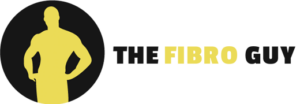- Breakthrough For Ehlers Danlos Syndrome and Endometriosis - 13 March 2025
- Does EDS get worse as you age? - 20 February 2025
- Can Ehlers Danlos Syndrome Cause Weight Gain/Loss? - 18 February 2025
When it comes to anything related to hypermobility rehab/exercise, the internet can be full of really bad advice. It seems to only take a few finger scrolls through TikTok to find the “try this one exercise to heal hypermobility pain” videos, or any number of people stating things that fall far outside the realm of actual science. In fact, I recently saw a Pilates teacher promoting that people lean back when walking uphill!
This is something that is not only ridiculous but incredibly unsafe. Besides, humans are essentially a bag of levers, levers that are meant to adapt and be able to handle load, force and stress, not shy away from it. Not only does leaning back pose a huge fall and balance risk, but it will also, over time, make you less tolerant to load: which is the exact opposite of what you should be trying to achieve!
But I digress!
Today, I want to give you some tips when it comes to hypermobility exercises and some advice that has served me well over the years. Which, hopefully, If you also implement will also serve you.
This article covers:
ToggleTips 1: Tissues are an issue, but not the biggest one
With hypermobility and exercise, many people focus too much on muscle building and not enough on the real underlying issue: proprioception. Or more accurately, the cortical maps that make proprioception possible. Proprioception is often misunderstood and misused in rehab contexts. It’s not just about standing on a wobbleboard or doing balance exercises; it’s about how the brain interprets sensory information to understand body position, and how the motor system uses this information to create stable movement.
Cortical maps are the brain’s way of creating a detailed representation of the body, which is crucial for proprioception and motor control. These maps are shaped by sensory inputs from various mechanoreceptors, nociceptors, and proprioceptors. When you perform specific movements, these receptors send information to the brain, helping it refine and update its internal map of your body. In hypermobility, this system is often disrupted (a form of sensory impairment if you will), leading to poor proprioception and joint instability, due to injury, tissue laxity, or altered firing rates of things like muscle spindles.
Building muscle alone doesn’t address the issue. While muscle strength can provide some stability, it’s not enough for those with hypermobility. The key lies in enhancing proprioceptive feedback to improve cortical maps and training your motor systems to create the same movement every time, rather than moving differently every time for the same movement or joint action.
Incorporating things like tactile cues can be a good place to start in your exercise/rehab. Tactile cues, such as using resistance bands, KT tape, or manual touch, provide sensory feedback that helps the brain better understand joint positioning and movement. This enhanced feedback can improve muscle recruitment and joint stability, making exercises more effective. By consistently applying tactile cues and performing movements with high repetitions, individuals with hypermobility can significantly improve their proprioception and overall joint control. If you want to learn more about your cortical maps I write a good 10k article on the topic a while back which you can read here.
Additionally, research has shown that tactile learning can transfer between different body parts, even those not directly involved in the training. This transfer effect suggests that incorporating tactile cues in rehabilitation exercises for one body part might have beneficial effects on other areas as well. For instance, training with tactile cues on the foot might improve sensory perception and performance in the hand, potentially broadening the impact of rehabilitation exercises.
Below is a video in tactile cue application from our private archive:
This approach not only gives you a chance to better connect to your tissue but also helps you contract more muscle fibres to help deal with load: which just so happens to be what our next tip is!
Tip 2: Don’t shy away from load
Joint loading is a fundamental concept in biomechanics and exercise physiology, referring to the forces and stresses applied to joints during various activities and movements. We categorise joint loading into two primary types: compressive loading and tensile loading.
Compressive loading involves forces that push joint surfaces together, typically seen in weight-bearing activities like walking or standing on one leg
Tensile loading, on the other hand, involves forces that pull joint surfaces apart, often occurring in activities that stretch or elongate joints and surrounding tissues.
Understanding the nuances of joint mechanics is key, as different types of loading affect joint health, stability, and function in various ways. Compressive loading plays a pivotal role in stimulating cartilage metabolism and bone remodelling, which is crucial for maintaining joint integrity and preventing issues like osteoporosis. This type of loading also boosts joint stability by engaging the surrounding muscles and promoting even load distribution. On the other hand, tensile loading is essential for keeping ligaments, tendons, and joint capsules elastic and strong. It supports flexibility and range of motion, which are vital for optimal joint function.
In your rehab/exercise, you should be actively (but safely) trying to follow the concept of progressive overload. This principle involves gradually increasing the stress placed on the musculoskeletal system to promote adaptation and improvement. However, it’s important to balance this progression with adequate recovery time and proper technique to avoid overloading joints beyond their capacity to adapt.
Those with hypermobility are more prone to delayed onset muscle soreness (DOMS), so pushing too hard too fast isn’t advisable. Research indicates that those with Hypermobility experience much higher levels of pain after eccentric exercises compared to those without hypermobility. Studies using the Visual Analog Scale (VAS) to measure pain levels show that hypermobile individuals might need more recovery time between workouts. Although their physiological responses regarding muscle damage and inflammation are similar to non-hypermobile people, the increased pain they report shows you that you should focus on a slow and steady approach to exercising. This way, you can manage pain better and avoid overexertion, whilst still gaining the benefits of joint loading.
Whilst research shows that joint loading is not just beneficial but essential for maintaining joint health, cartilage integrity, and overall musculoskeletal function in human health and physical well-being, surprise, surprise, the research into load and hypermobility is very much still lacking. Research into hypermobility has always primarily focused on its association with pain, injury risk, and systemic issues, and I don’t see this starting to change anytime soon.
However, you are still human, and appropriate joint loading leads to stronger bones, tendons, and tissues, which is especially important considering new research that reveals the crucial link between leg exercises and brain health. When you engage in weight-bearing activities, your legs send important signals to the brain, boosting the production of new nerve cells and supporting neural health. This process, called neurogenesis, plays a key role in cognitive function and stress management. Studies show that limiting leg movement can significantly reduce neural stem cell activity, hampering the brain’s ability to generate new neurons.
Additionally, leg exercises have a positive effect on body chemistry, oxygen levels, and gene expression, especially genes vital for mitochondrial health and energy production. Regular leg exercises also enhance the development of oligodendrocytes, the cells that insulate and support neurons. While more research is definitely needed, specifically, on hypermobility and these neurological benefits, it’s evident that well-managed leg exercises offer significant advantages beyond just musculoskeletal health.
As I mentioned before, load is important, we live with gravity, and you need to be able to handle the stress that it places upon your joints. Yes, it’s great that you can get in the swimming pool, and its easy on your joints and you can do cardio, but we don’t live in water, and you need to be able to handle the load on your joints, and that’s where progressive overload comes into play.
Tips 3: Muscle Tone over Muscle Strength
Everyone wants to be strong, but do you know what feels even better than feeling strong?
Being able to not pay attention and know that your joints will be held in place!
When dealing with hypermobility, it’s common to hear that muscle strengthening is the key to stabilising joints. However, as I mentioned before (and it’s something I dedicated 10k words to not so long ago), this approach often overlooks a crucial element: your cortical maps.
Now, if your cortical maps and motor functions control how well you can connect to your tissues, think of muscle tone as how long you can maintain that connection with ease. While building muscle strength is about generating maximum force, muscle tone focuses on maintaining continuous partial muscle contraction, something really important for joint stability and posture.
Muscle tone, is the muscle’s readiness to respond to stimuli, providing a baseline level of contraction that keeps joints stable even at rest. For hypermobile individuals, this is particularly important because their connective tissues are laxer, and they rely more on muscle tone to maintain joint integrity. Research shows that Infants with hypermobility often have weak muscle tone, which can delay the development of motor skills such as sitting, standing, and walking: this adds up to what I have heard at “The Fibro Guy” as most of our hypermobile clients never crawled as children.
This ties into the concept of neuromechanical coupling, which refers to the intricate relationship between the nervous system and the mechanical properties of the musculoskeletal system. The nervous system regulates muscle tone through both central and peripheral mechanisms, allowing continuous adjustments in muscle tension. This regulation affects joint stiffness, enhancing stability and preventing injuries by maintaining appropriate muscle tone.
Increasing the resting neural activity of muscles involves enhancing the baseline level of muscle activation even when the muscles are not actively contracting. Here are some strategies based on current research and understanding:
Exercise and Training
- Strength Training: Regular resistance training can improve neuromuscular efficiency and increase resting muscle tone. Focus on exercises that engage multiple muscle groups and incorporate progressive overload.
- Higher reps, not necessarily heavier weight – Focus on the mind-muscle connection during exercises to enhance neural activation, ensure to consciously contract and relax the muscles throughout the high reps and as the muscle starts to shake and fatigue.
- Motor Imagery: Practicing motor imagery, where you mentally rehearse movements without physical execution, can enhance neural activation of muscles. This technique is often used in rehabilitation and sports training to improve motor control and muscle tone.
- Consistent Practice: Regularly Incorporate time under tension (TUT) exercises into your workout routine. TUT exercises involve prolonging the duration of muscle contraction during each repetition, which can effectively enhance muscle tone and development.
Thermal Interventions
- Local Heating: Applying heat to muscles can increase spinal and supraspinal excitability, thereby enhancing neural drive and muscle activation. For example, local knee heating has been shown to increase excitability and torque production in the ankle muscles of older adults.
Navigating the world of hypermobility exercises can be daunting, especially with so much misinformation circulating online. From the ludicrous advice to lean back while walking uphill to quick-fix claims on social media, it’s crucial to approach your rehab and exercise routines with informed caution. There is no one exercise to fix everything and certainly no quick fixes in the world of hypermobile exercise/rehab.
I want you to remember, that hypermobility isn’t just about lax tissues; it’s about how well your brain can map and control your movements. Focusing solely on building muscle won’t address the core issues. Enhancing proprioception through better cortical maps is key. Incorporate tactile cues to improve your proprioception and movement consistency, ensuring each exercise strengthens not just your muscles but your brain’s connection to them.
Likewise, don’t shy away from loading your joints, as properly managed, progressive overload can help your body adapt to physical stresses, strengthening bones, tendons, and tissues. This not only aids in maintaining joint health but also supports overall musculoskeletal function. Always balance your progression with adequate recovery to avoid overexertion, especially considering the higher levels of pain hypermobile individuals can experience.
Keep in mind also, that while muscle strength is about generating maximum force, muscle tone is crucial for maintaining continuous partial contraction, essential for joint stability and posture. Muscle tone provides the baseline readiness for your muscles to respond to stimuli, which is particularly important for those with hypermobility.
By integrating these strategies, you can develop a more resilient and stable musculoskeletal system, tailored to the unique challenges of hypermobility.
Remember my friends, train smarter, not harder.
Enjoyed Our Blog? Why Stop Here?
If you’ve found value in our posts, imagine what you’ll gain from a structured, science-backed course designed just for you. Hypermobility 101 is your ultimate starting point for building strength, stability, and confidence in your body.





